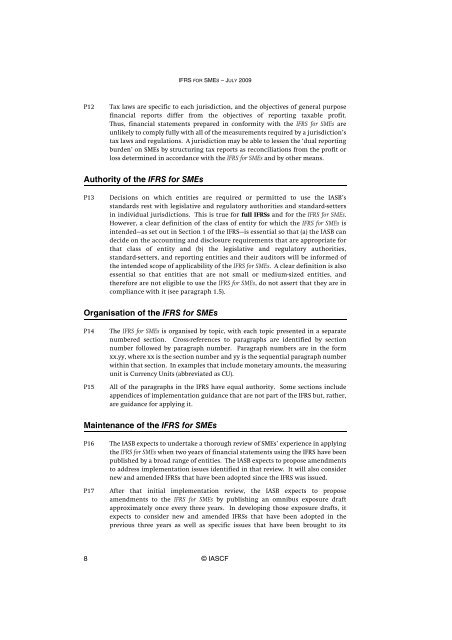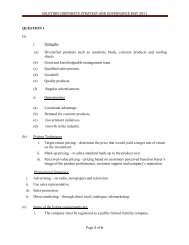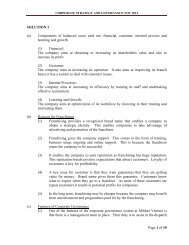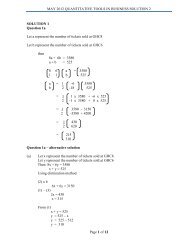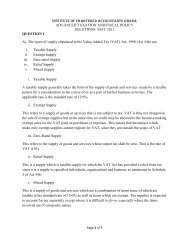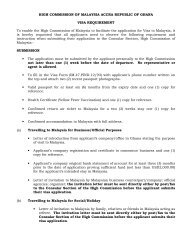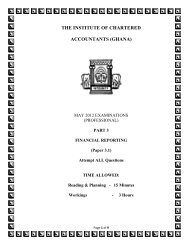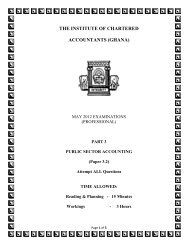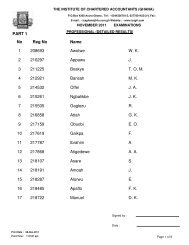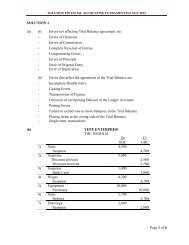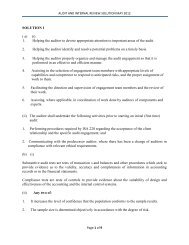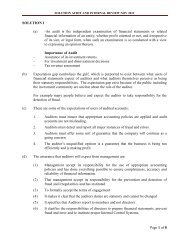(IFRS) for Small and Medium-sized Entities (SMEs)
(IFRS) for Small and Medium-sized Entities (SMEs)
(IFRS) for Small and Medium-sized Entities (SMEs)
You also want an ePaper? Increase the reach of your titles
YUMPU automatically turns print PDFs into web optimized ePapers that Google loves.
<strong>IFRS</strong> FOR SMES – JULY 2009P12Tax laws are specific to each jurisdiction, <strong>and</strong> the objectives of general purposefinancial reports differ from the objectives of reporting taxable profit.Thus, financial statements prepared in con<strong>for</strong>mity with the <strong>IFRS</strong> <strong>for</strong> <strong>SMEs</strong> areunlikely to comply fully with all of the measurements required by a jurisdiction’stax laws <strong>and</strong> regulations. A jurisdiction may be able to lessen the ‘dual reportingburden’ on <strong>SMEs</strong> by structuring tax reports as reconciliations from the profit orloss determined in accordance with the <strong>IFRS</strong> <strong>for</strong> <strong>SMEs</strong> <strong>and</strong> by other means.Authority of the <strong>IFRS</strong> <strong>for</strong> <strong>SMEs</strong>P13Decisions on which entities are required or permitted to use the IASB’sst<strong>and</strong>ards rest with legislative <strong>and</strong> regulatory authorities <strong>and</strong> st<strong>and</strong>ard-settersin individual jurisdictions. This is true <strong>for</strong> full <strong>IFRS</strong>s <strong>and</strong> <strong>for</strong> the <strong>IFRS</strong> <strong>for</strong> <strong>SMEs</strong>.However, a clear definition of the class of entity <strong>for</strong> which the <strong>IFRS</strong> <strong>for</strong> <strong>SMEs</strong> isintended—as set out in Section 1 of the <strong>IFRS</strong>—is essential so that (a) the IASB c<strong>and</strong>ecide on the accounting <strong>and</strong> disclosure requirements that are appropriate <strong>for</strong>that class of entity <strong>and</strong> (b) the legislative <strong>and</strong> regulatory authorities,st<strong>and</strong>ard-setters, <strong>and</strong> reporting entities <strong>and</strong> their auditors will be in<strong>for</strong>med ofthe intended scope of applicability of the <strong>IFRS</strong> <strong>for</strong> <strong>SMEs</strong>. A clear definition is alsoessential so that entities that are not small or medium-<strong>sized</strong> entities, <strong>and</strong>there<strong>for</strong>e are not eligible to use the <strong>IFRS</strong> <strong>for</strong> <strong>SMEs</strong>, do not assert that they are incompliance with it (see paragraph 1.5).Organisation of the <strong>IFRS</strong> <strong>for</strong> <strong>SMEs</strong>P14P15The <strong>IFRS</strong> <strong>for</strong> <strong>SMEs</strong> is organised by topic, with each topic presented in a separatenumbered section. Cross-references to paragraphs are identified by sectionnumber followed by paragraph number. Paragraph numbers are in the <strong>for</strong>mxx.yy, where xx is the section number <strong>and</strong> yy is the sequential paragraph numberwithin that section. In examples that include monetary amounts, the measuringunit is Currency Units (abbreviated as CU).All of the paragraphs in the <strong>IFRS</strong> have equal authority. Some sections includeappendices of implementation guidance that are not part of the <strong>IFRS</strong> but, rather,are guidance <strong>for</strong> applying it.Maintenance of the <strong>IFRS</strong> <strong>for</strong> <strong>SMEs</strong>P16P17The IASB expects to undertake a thorough review of <strong>SMEs</strong>’ experience in applyingthe <strong>IFRS</strong> <strong>for</strong> <strong>SMEs</strong> when two years of financial statements using the <strong>IFRS</strong> have beenpublished by a broad range of entities. The IASB expects to propose amendmentsto address implementation issues identified in that review. It will also considernew <strong>and</strong> amended <strong>IFRS</strong>s that have been adopted since the <strong>IFRS</strong> was issued.After that initial implementation review, the IASB expects to proposeamendments to the <strong>IFRS</strong> <strong>for</strong> <strong>SMEs</strong> by publishing an omnibus exposure draftapproximately once every three years. In developing those exposure drafts, itexpects to consider new <strong>and</strong> amended <strong>IFRS</strong>s that have been adopted in theprevious three years as well as specific issues that have been brought to its8 © IASCF


